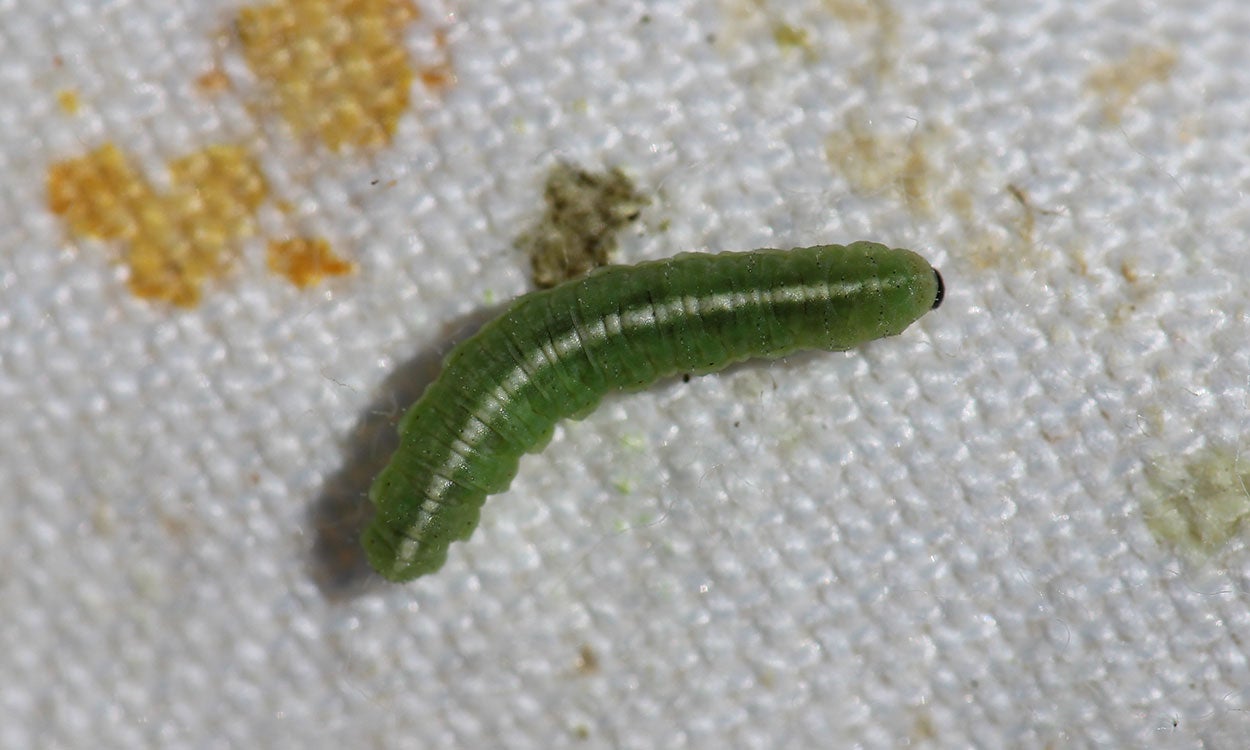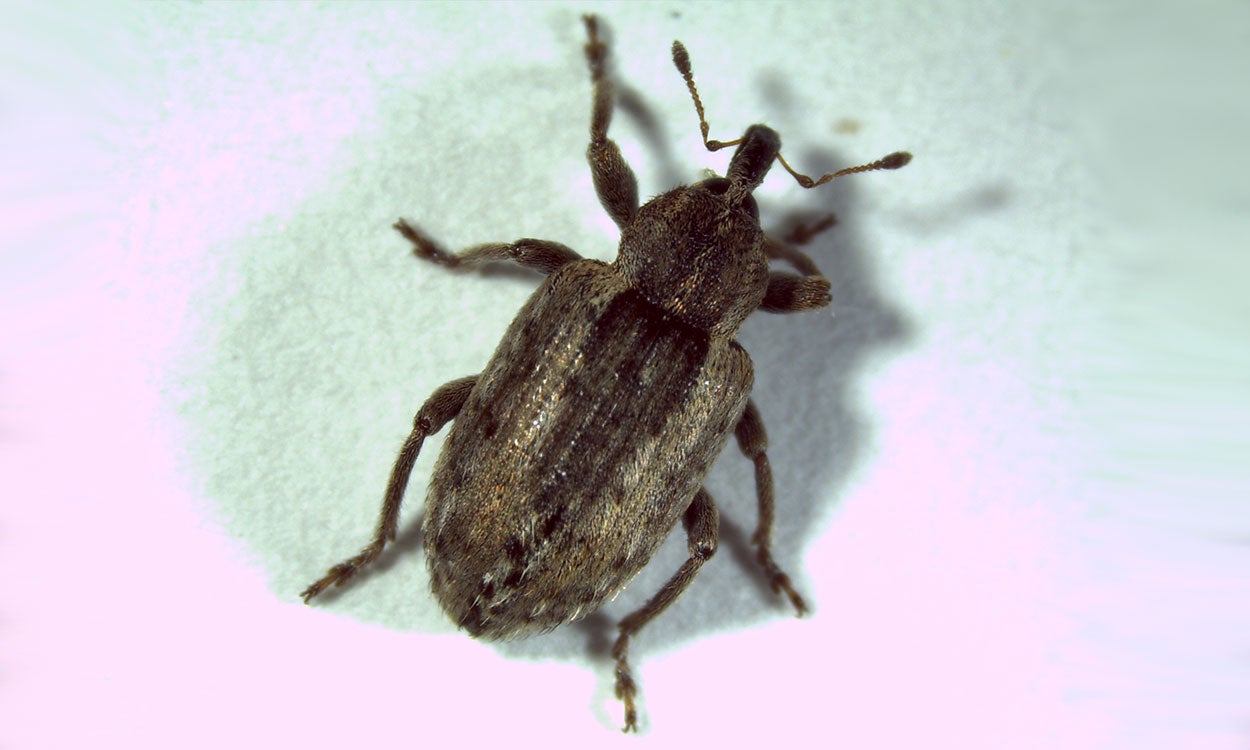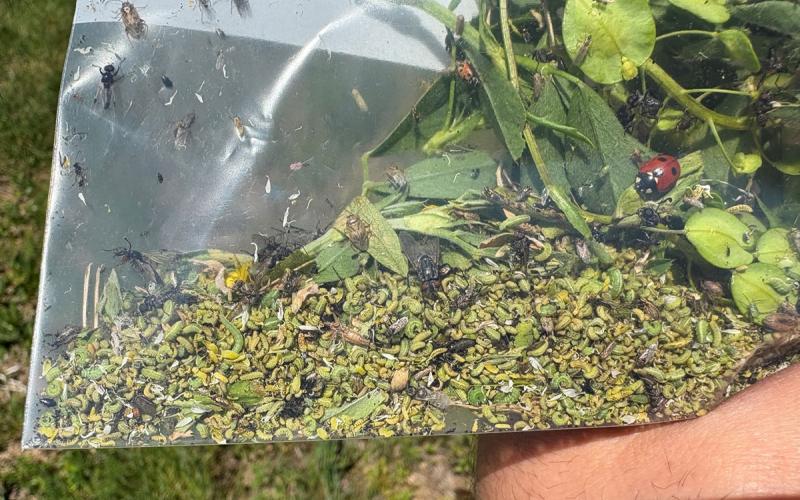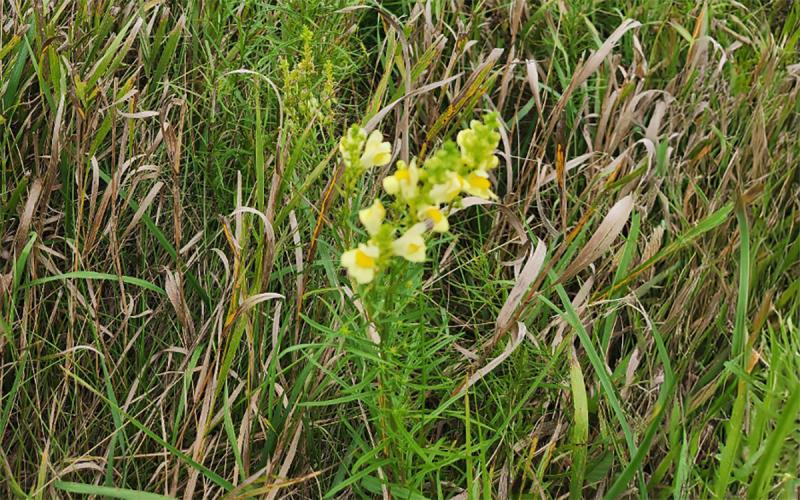Written with contributions by Shelby Pritchard, former SDSU Extension Pest Management Specialist.
Originally Submitted: May 26, 2022
During 2021, alfalfa weevil populations caused substantial defoliation throughout much of South Dakota. In many areas, these populations seemed to spring up overnight and left alfalfa fields with leaves that were full of holes and turning white. The 2022 spring is shaping up to be pretty similar to that of 2021, with cool evening temperatures preventing the rapid accumulation of degree days. This, in turn, is slowing down alfalfa weevil larvae development. Alfalfa weevil larvae have been confirmed in alfalfa fields in South Dakota though, which means it is time to start scouting fields more regularly. Although larvae are still in the first and second instars, they will still cause feeding damage, and populations should be monitored to ensure that large infestations don’t cause the same problems that were observed last year. When large infestations are present, alfalfa weevil adults and larvae both feed on the alfalfa plant, removing leaf tissue. The larvae cause the greatest damage by feeding on the terminal buds of the plant, which can greatly affect alfalfa growth.
Identification
The larvae of the alfalfa weevil are small, green and resemble caterpillars. They have a white stripe on their backs and a dark brown/black head capsule (Figure 1). The larvae will have three pairs of legs near their head. The adults are small, brown beetles with a darker brown stripe that runs down their midline. Alfalfa weevil adults also have an elongated snout that is characteristic of the weevil family. (Figure 2).


Scouting
The best way to determine if alfalfa weevils are present in a field is to use a sweep net and a five-gallon bucket. The sweep net is used to quickly sample the field to determine if alfalfa weevil larvae are present. If their presence is confirmed in the field, the next step is to determine their population density. To do this, we recommend walking in a “Z” pattern and randomly sampling a total of 30 plants (i.e. Sample approximately 10 plants per leg of the “Z”). Each plant that is selected needs to be pulled out gently and then hit against the inside of the five-gallon bucket to dislodge any larvae that are present. We recommend this method versus trying to count the beetles and larvae on the intact plant, because adult alfalfa weevils will fall off the plant when disturbed as a defense mechanism, and the larvae can be hard to find.
Once completed, the plant should be measured to determine height and the number of larvae in the bucket should be counted. Repeat this process until a total of 30 plants have been sampled. Lastly, calculate the average number of larvae and the height of the plants. Tables 1-4 contain threshold information for alfalfa weevils based on plant height and the number of larvae present.
Economic Thresholds
|
|
||||
|---|---|---|---|---|
|
|
|
|
|
|
| Value of hay per ton |
|
|||
| $60 |
|
|
|
|
| $80 |
|
|
|
|
| $100 |
|
|
|
|
| $120 |
|
|
|
|
| $140 |
|
|
|
|
| $160 |
|
|
|
|
| $180 |
|
|
|
|
| $200 |
|
|
|
|
| $220 |
|
|
|
|
|
|
||||
|---|---|---|---|---|
|
|
|
|
|
|
| Value of hay per ton |
|
|||
| $60 |
|
|
|
|
| $80 |
|
|
|
|
| $100 |
|
|
|
|
| $120 |
|
|
|
|
| $140 |
|
|
|
|
| $160 |
|
|
|
|
| $180 |
|
|
|
|
| $200 |
|
|
|
|
| $220 |
|
|
|
|
|
|
||||
|---|---|---|---|---|
|
|
|
|
|
|
| Value of hay per ton |
|
|||
| $60 |
|
|
|
|
| $80 |
|
|
|
|
| $100 |
|
|
|
|
| $120 |
|
|
|
|
| $140 |
|
|
|
|
| $160 |
|
|
|
|
| $180 |
|
|
|
|
| $200 |
|
|
|
|
| $220 |
|
|
|
|
|
|
||||
|---|---|---|---|---|
|
|
|
|
|
|
| Value of hay per ton |
|
|||
| $60 |
|
|
|
|
| $80 |
|
|
|
|
| $100 |
|
|
|
|
| $120 |
|
|
|
|
| $140 |
|
|
|
|
| $160 |
|
|
|
|
| $180 |
|
|
|
|
| $200 |
|
|
|
|
| $220 |
|
|
|
|
Management
If thresholds are exceeded, there are several insecticides available for management. Please refer to the latest Alfalfa and Oilseeds Pest Management Guide for labeled insecticides and their associated rates. Neighboring states have received reports of pyrethroid failures when these insecticides were applied to manage alfalfa weevils. If you observe a pyrethroid failure please report it to Adam Varenhorst at adam.varenhorst@sdstate.edu.


